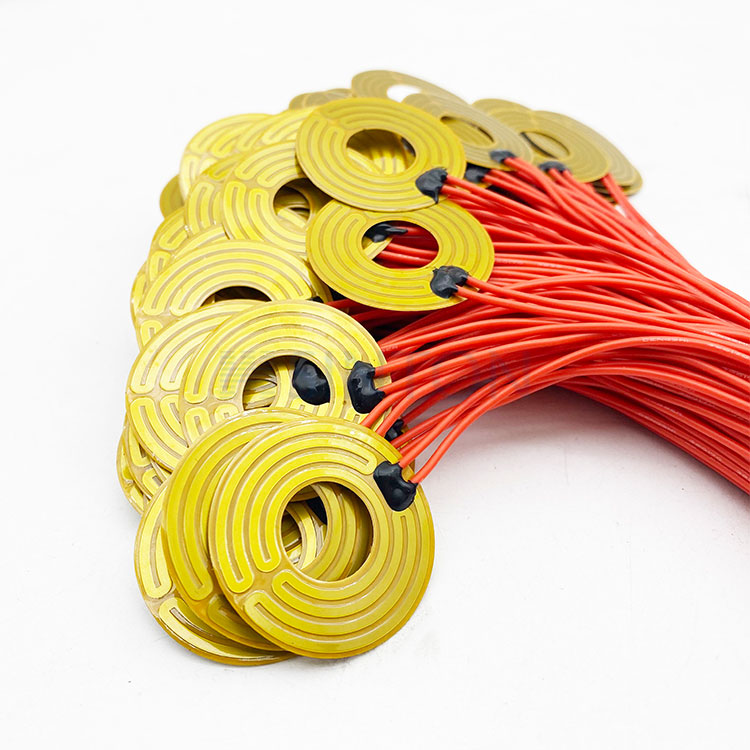WhatsApp: +86-185-5601-8866
Heating Equipment
News

2024-08-19
Heat Distribution: Polyimide's relatively low thermal conductivity (typically around 0.12 W/m·K) means that it is less effective at spreading heat across its surface compared to materials with higher thermal conductivity. This characteristic affects how heat is distributed from the heating elements integrated into the Polyimide film. When a Polyimide heating film is powered, heat generated at the heating elements does not efficiently diffuse through the film due to its lower conductivity. This can result in localized heating effects where areas directly adjacent to the heating elements achieve higher temperatures more quickly than distant areas. In applications where a uniform temperature is critical, such as in precise thermal sensors or delicate electronic components, this uneven heat distribution can lead to performance inconsistencies and reduced efficacy.
Temperature Gradients: The low thermal conductivity of Polyimide creates notable temperature gradients across the film. When heat is applied, the lack of efficient thermal diffusion means that the temperature can vary significantly from the center of the film to its edges. This creates a situation where the temperature profile is non-uniform, potentially leading to areas of excessive heat and other areas that are inadequately heated. Such temperature gradients can affect the overall thermal performance, especially in applications requiring uniform heating for consistent material processing or temperature-sensitive experiments. Understanding and mitigating these gradients is essential for applications such as advanced manufacturing processes or high-precision instruments.
Response Time: The response time of a Polyimide heating film is closely related to its thermal conductivity. Due to the material's poor thermal conduction properties, different regions of the film may heat up at different rates. Areas in proximity to the heat source might achieve the target temperature faster than those further away. This variation in heating response can be critical in dynamic applications where quick and uniform temperature changes are required. For instance, in applications like rapid thermal cycling or temperature-sensitive testing, delays in achieving uniform temperatures can lead to inaccuracies and inefficiencies. Therefore, addressing the delayed response through design optimizations or incorporating temperature control mechanisms is vital.
Design Considerations: To counteract the effects of low thermal conductivity, engineers often integrate design features that enhance the performance of Polyimide heating films. These features can include: Patterned Heating Elements: By designing the heating elements in specific patterns, it is possible to improve heat distribution and reduce hotspots. For example, using a serpentine or grid pattern can promote more uniform heating across the film. Thermal Insulation Layers: Adding insulation layers to the back of the Polyimide film can help minimize heat loss and improve thermal efficiency. This ensures that the heat is directed more effectively to the intended areas. Thermal Interface Materials: Using materials with higher thermal conductivity as interfaces between the Polyimide film and its substrate can enhance heat transfer and reduce temperature gradients. Enhanced Control Systems: Implementing sophisticated temperature control systems, such as feedback loops or temperature sensors, can help monitor and adjust heating to achieve more uniform results.
Polyimide Film Heating Elements

Looking For Business Opportunity?
Request for a call today

WhatsApp: +86-185-5601-8866
Tel: +86-185-5601-8866
E-mail: [email protected]
Address: Sinton Building, No. 886 Yandu Road, Yandu District, Yancheng City, Jiangsu Province
Friendly Link: www.cn-lvdao.com www.sealing-china.com
Products
Message